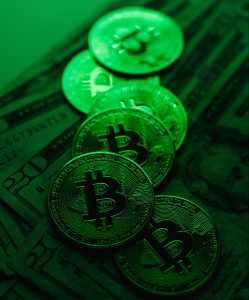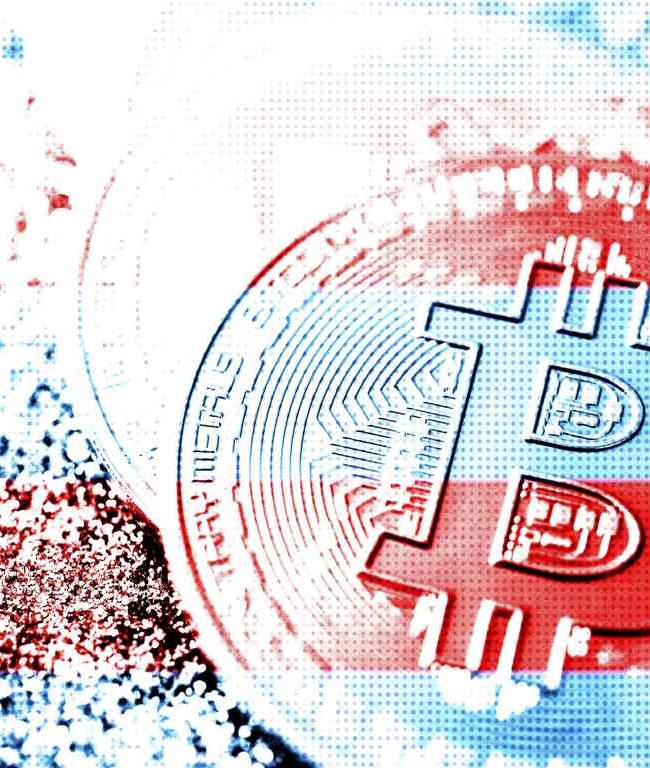Decentralized Finance (DeFi): The Ultimate 2023 Guide.

In recent years, the world of finance has undergone a transformative shift propelled by the advent of blockchain technology. At the forefront of this financial revolution stands decentralized finance, commonly known as DeFi.
This comprehensive guide aims to provide a deep understanding of the intricacies and opportunities that decentralized finance presents in 2023.
The best part of all, with the elimination of centralized authorities and the transparency of blockchain technology, DeFi creates an open and inclusive ecosystem that is accessible to anyone with an internet connection.
This guide will equip you with the knowledge and insights necessary to navigate the exciting world of decentralized finance in 2023.
What is Decentralized Finance or DeFi?

What is Decentralized Finance (DeFi)?
Decentralized finance, commonly known as DeFi, is a revolutionary concept that leverages blockchain technology to create an open and inclusive financial ecosystem.
Unlike traditional finance, which relies on centralized intermediaries such as banks, DeFi operates on decentralized protocols and smart contracts that are built on blockchain networks like Ethereum. This transformative approach eliminates the need for intermediaries and empowers individuals by providing direct control over their financial assets and transactions.

Key Characteristics of Decentralized Finance (DeFi)
Trustless Transactions: DeFi utilizes smart contracts to automate and execute transactions without the need for intermediaries. These contracts are self-executing and verifiable, providing trust and security without relying on a centralized authority.
Global Accessibility: DeFi protocols are accessible to anyone with an internet connection, enabling individuals from all corners of the world to participate in financial activities. This inclusivity is particularly valuable for the unbanked or underbanked populations who can now access financial services without the need for a traditional bank account.
Decentralized Exchanges: DeFi platforms offer decentralized exchanges (DEXs) that allow users to trade digital assets directly with each other. DEXs eliminate the need for intermediaries like traditional exchanges, providing users with greater control over their funds and reducing the risk of hacking or manipulation.
Lending and Borrowing: DeFi enables peer-to-peer lending and borrowing, allowing individuals to lend out their cryptocurrencies and earn interest or borrow funds using their digital assets as collateral. This opens up new opportunities for individuals to access capital or generate passive income.
Yield Farming: Yield farming is a popular practice in DeFi where users can earn additional tokens by providing liquidity to decentralized exchanges or lending platforms. This incentivizes participation in the ecosystem and can result in high yields for those willing to take on the associated risks.
This is how stats reflect the growth of DeFi
Total Value Locked (TVL):
In 2021, the TVL in DeFi protocols surpassed $100 billion for the first time, reflecting a substantial increase in adoption and capital locked in various DeFi platforms.
By mid-2023, the TVL in DeFi had surged to over $200 billion, indicating continued growth and confidence in the ecosystem.
Trading Volume:
The trading volume on decentralized exchanges (DEXs) has witnessed remarkable growth. In 2021, the monthly trading volume on DEXs surpassed $100 billion, with platforms like Uniswap and Sushiswap leading the way.
By 2023, the monthly trading volume on DEXs reached an astonishing $200 billion, highlighting the increasing preference for decentralized trading platforms.
User Growth:
The number of unique DeFi wallet addresses has experienced substantial growth. In 2021, the number of addresses surpassed 5 million, indicating a significant user base engaging with DeFi protocols.
By 2023, the number of unique DeFi wallet addresses surpassed 10 million, showcasing a doubling of user adoption and interest in decentralized finance.
Yield Farming Rewards:
Yield farming has emerged as a popular way to earn additional tokens within the DeFi ecosystem. In 2021, yield farming rewards exceeded $10 billion, providing lucrative opportunities for participants.
By 2023, the total value of yield farming rewards had reached over $20 billion, showcasing the potential for users to generate substantial returns through participating in DeFi protocols.
These statistics demonstrate the rapid growth and increasing prominence of DeFi within the financial landscape.
As DeFi continues to evolve, it is important to recognize the potential risks and challenges it poses, including smart contract vulnerabilities, regulatory uncertainties, and market volatility.
Decentralized Finance: A Brief History
Decentralized Finance has rapidly emerged as a revolutionary force in the financial world, but its roots trace back to the early days of blockchain technology. To understand the evolution and significance of DeFi in 2023, let’s take a journey through its brief history.
The foundations of decentralized finance were laid with the launch of Bitcoin, the pioneering cryptocurrency, in 2009. Bitcoin introduced the concept of a decentralized digital currency, operating on a peer-to-peer network, and removing the need for intermediaries like banks.

In 2015, Ethereum, a blockchain platform with smart contract functionality, took the concept further by enabling the development of decentralized applications (dApps). Smart contracts are self-executing agreements that automatically execute predefined terms once certain conditions are met.
Ethereum’s programmable blockchain allowed developers to create a wide range of decentralized applications, opening the door for what would later become DeFi.

Ethereum – Pioneering Decentralized Finance Transactions
The first DeFi project to gain significant attention was MakerDAO, which launched in 2017. MakerDAO introduced the concept of decentralized stablecoins, specifically DAI, which is designed to maintain a stable value relative to the US dollar. It achieved stability through a combination of smart contracts and collateralization with other cryptocurrencies, providing a reliable decentralized alternative to traditional fiat-backed stablecoins.
In the following years, the DeFi landscape began to rapidly expand.
In 2019, Compound, a decentralized lending and borrowing protocol, gained prominence. It allowed users to earn interest on their cryptocurrencies by lending them out, while borrowers could access funds by providing collateral. Compound introduced the concept of algorithmic interest rates and laid the groundwork for decentralized money markets.
As we enter 2023, DeFi has become an established sector within the broader cryptocurrency and blockchain ecosystem. It encompasses a wide range of financial services, including lending, borrowing, decentralized exchanges, derivatives, insurance, and more.
In conclusion, the history of DeFi is a story of innovation, experimentation, and disruption.
How Prominent Is DeFi in Today’s World?
One of the key factors contributing to the prominence of DeFi is its ability to address long-standing inefficiencies and limitations of traditional financial systems.
The growth and adoption of DeFi have been nothing short of remarkable.
In recent years, the total value locked (TVL) in DeFi protocols has surged past significant milestones. In 2021, the TVL surpassed $100 billion, and by 2023, it exceeded $200 billion, highlighting the confidence and capital flowing into the DeFi ecosystem.
This growth is further reflected in the increasing number of unique DeFi wallet addresses, which surpassed 10 million in 2023.
DeFi’s prominence is also evident in the exponential growth of decentralized exchanges (DEXs). These platforms enable users to trade cryptocurrencies directly, without the need for a centralized intermediary. In 2021, the monthly trading volume on DEXs exceeded $100 billion, and by 2023, it reached an impressive $200 billion.
So overall, DeFi has attained remarkable prominence in today’s world, revolutionizing the way we think about finance.
DeFi vs CeFi: What’s The Difference?

(source: Ace Infoway)
DeFi (Decentralized Finance) and CeFi (Centralized Finance) are two distinct paradigms in the financial industry, each with its own set of characteristics, benefits, and limitations.
Let’s explore the key differences between DeFi and CeFi in detail:
Control and Ownership
DeFi: In DeFi, users have full control over their assets and funds. Transactions and interactions with DeFi protocols are executed through smart contracts on decentralized blockchain networks. Users manage their private keys, which gives them sole ownership and access to their assets.
CeFi: In contrast, CeFi platforms are centralized entities that hold and manage user funds. Users typically create accounts on these platforms, and their assets are stored within the platform’s infrastructure. The platform acts as a custodian, which means users are entrusting their funds to the platform’s control.
Access and Global Reach
DeFi: DeFi applications and services are accessible to anyone with an internet connection and a compatible digital wallet. They are permission-less and available to users globally without restrictions.
CeFi: CeFi platforms may have geographic restrictions, and users often need to go through a KYC (Know Your Customer) process to access their services. Some platforms may not be available in certain countries due to regulatory constraints.
Innovation and Flexibility
DeFi: DeFi platforms are highly innovative, as they are built on open-source protocols, allowing developers to create and integrate new financial products and services seamlessly. This results in a rapidly evolving DeFi ecosystem.
CeFi: While CeFi platforms can innovate to a certain extent, their development and implementation of new features often require centralized decision-making and may take longer to materialize.
Security and Risks
DeFi: Security in DeFi primarily relies on the correctness and robustness of smart contracts. However, vulnerabilities in smart contracts can lead to potential risks, such as hacking and exploits. Auditing and testing of smart contracts are crucial to minimize these risks.
CeFi: CeFi platforms typically have more established security measures and may offer insurance or compensation in case of security breaches. Users also benefit from customer support and assistance in case of account-related issues.
Regulation and Compliance
DeFi: DeFi operates in a relatively unregulated space, which allows for more freedom but may also expose users to potential risks without legal recourse.
CeFi: CeFi platforms are subject to various financial regulations, providing users with certain levels of protection but also limiting the scope of services and geographic reach.
In summary, DeFi and CeFi represent two fundamentally different approaches to financial services. DeFi offers decentralization, autonomy, and innovation, while CeFi provides a more familiar and regulated environment with added customer support and security.
Why Being Decentralized Is More Beneficial For Finance Than Centralized
When comparing decentralized and centralized systems within the realm of finance, it becomes evident that decentralization brings forth a multitude of benefits that can revolutionize the way we interact with our financial resources.
The key advantage of decentralized finance (DeFi) lies in its ability to eliminate the need for intermediaries and put individuals in full control of their assets. Unlike centralized systems, which rely on trusted third parties like banks or financial institutions to facilitate transactions and manage funds, DeFi operates on blockchain networks, ensuring autonomy.
Decentralization also promotes financial sovereignty by granting individuals full control over their assets. With DeFi, users hold private keys to their wallets, allowing them to transact directly without relying on intermediaries. This eliminates the risks associated with centralized platforms, such as account freezes, censorship, or the loss of funds due to hacking or malfeasance.
In summary, decentralization in finance brings numerous benefits that enhance user empowerment, inclusivity, security, and innovation.
Will the centralized finance system ultimately fail?
It’s a thought-provoking question that arises when we examine the rise of decentralized finance (DeFi) and its potential to disrupt traditional financial systems.
While it is tough to definitively predict the future, the growing trends in cryptocurrency and the unstoppable momentum of DeFi make it an intriguing possibility worth exploring.
The centralized finance system, as we know it, has long relied on intermediaries to facilitate transactions, maintain records, and manage the flow of funds. These intermediaries have acted as gatekeepers, holding authority over our money and dictating the rules of the financial game.
However, this system has faced its fair share of challenges and criticisms.
One of the inherent flaws of centralized finance is its vulnerability to manipulation and abuse. The financial crisis of 2008 exposed the risks associated with concentrated power and opaque practices within the banking industry.
Enter decentralized finance, a revolutionary concept that leverages blockchain technology to create a decentralized financial ecosystem. DeFi operates on open, permissionless networks like Ethereum, where smart contracts autonomously execute transactions and eliminate the need for intermediaries.
Nonetheless, the ongoing growth and adoption of cryptocurrencies, the increasing institutional interest, and the thriving DeFi ecosystem suggest that the centralized finance system may face significant disruption in the coming years.
The momentum is undeniable, and as technology advances and blockchain networks mature, the appeal of decentralized finance will likely continue to grow.
Pros & Cons of Decentralized Finance
Decentralized finance, or DeFi, has emerged as a transformative force in the financial world, bringing about numerous advantages and opportunities.
However, like any disruptive innovation, it also presents certain challenges and risks.
Pros of DeFi:
- Financial Inclusion: DeFi opens up access to financial services for individuals who are unbanked or underbanked, allowing them to participate in lending, borrowing, and investment activities without relying on traditional financial institutions.
- Peer-to-Peer Transactions: DeFi protocols facilitate direct peer-to-peer transactions, eliminating the need for intermediaries like banks or payment processors. This enhances efficiency, reduces costs, and enables faster settlement times.
- Transparency and Audibility: Blockchain technology underlying DeFi offers transparency and immutability. All transactions and smart contracts are recorded on the blockchain, providing verifiable and auditable information for participants.
- Enhanced Security: DeFi leverages cryptographic techniques and decentralized architecture, making it less susceptible to hacks and fraud. With user-owned private keys and secure smart contracts, DeFi platforms can enhance security and protect users’ assets.
- Yield Opportunities: DeFi introduces various opportunities to earn yields through activities like staking, liquidity providing, and yield farming. Users can generate passive income by leveraging their digital assets in DeFi protocols.
Cons of DeFi:
- Smart Contract Risks: Smart contracts, while programmable and autonomous, can still be vulnerable to coding bugs or exploits. If not audited or implemented correctly, these vulnerabilities can be exploited, resulting in financial losses.
- Regulatory Uncertainty: DeFi operates in a relatively nascent regulatory landscape. The absence of clear regulations and oversight can create uncertainty and potential legal challenges for users and projects within the DeFi space.
- Market Volatility: DeFi is highly intertwined with cryptocurrency markets, which are known for their volatility. Sudden price fluctuations can impact the value of assets within DeFi protocols, affecting users’ investments and yields.
- User Responsibility: As DeFi puts users in control of their assets, it also comes with the responsibility of managing private keys securely and making informed decisions. Users must exercise caution when interacting with DeFi protocols to avoid potential scams or fraudulent schemes.
- Scalability Challenges: The scalability of DeFi protocols, particularly those built on Ethereum, can be a limitation. As user activity increases, network congestion and high gas fees may impede the efficiency and accessibility of DeFi applications.
While DeFi presents exciting opportunities for financial empowerment and innovation, it is crucial to be mindful of the risks involved and make informed decisions when participating in this dynamic ecosystem.
The Wrap-Up On The Ultimate Decentralized Finance (DeFi) Guide
As we conclude this ultimate guide to decentralized finance (DeFi) in 2023, it is evident that DeFi has solidified its position as a disruptive force within the financial landscape.
The future of decentralized finance holds immense potential, with the mainstream adoption of decentralized finance on the horizon. We can expect clearer regulatory frameworks, increased interoperability and collaboration, and enhanced user experiences that prioritize accessibility and security.
Whether you are an investor, developer, or traditional financial institution, the future of DeFi invites you to participate in reshaping the financial landscape!
People Also Read:
Metaverse Assets To Invest In 2023
Web 3.0 – The power of Decentralization




